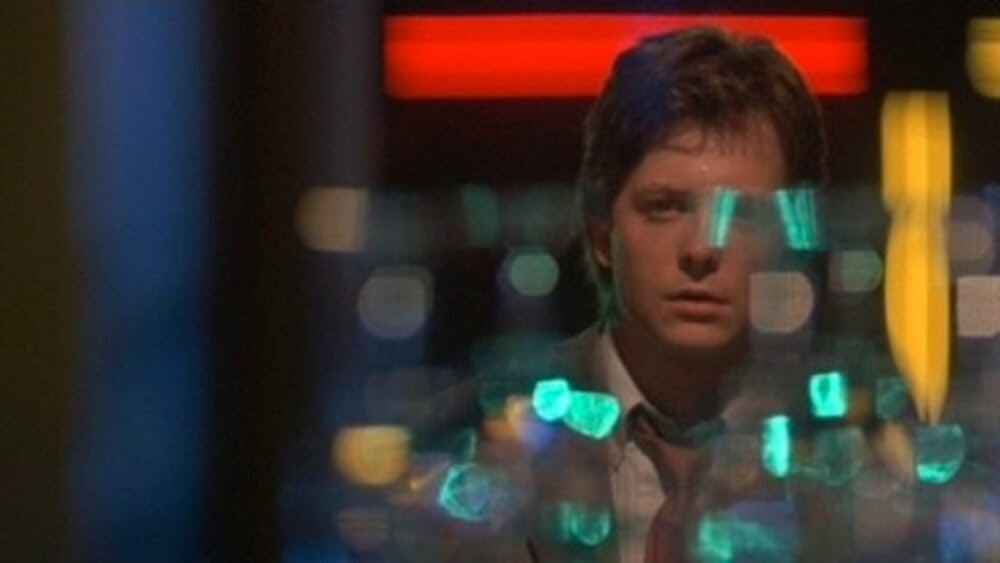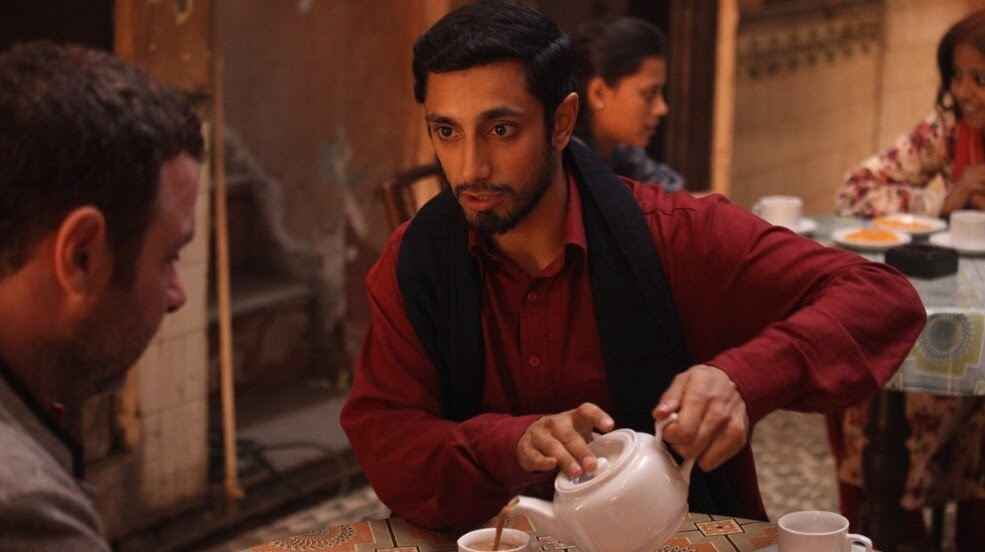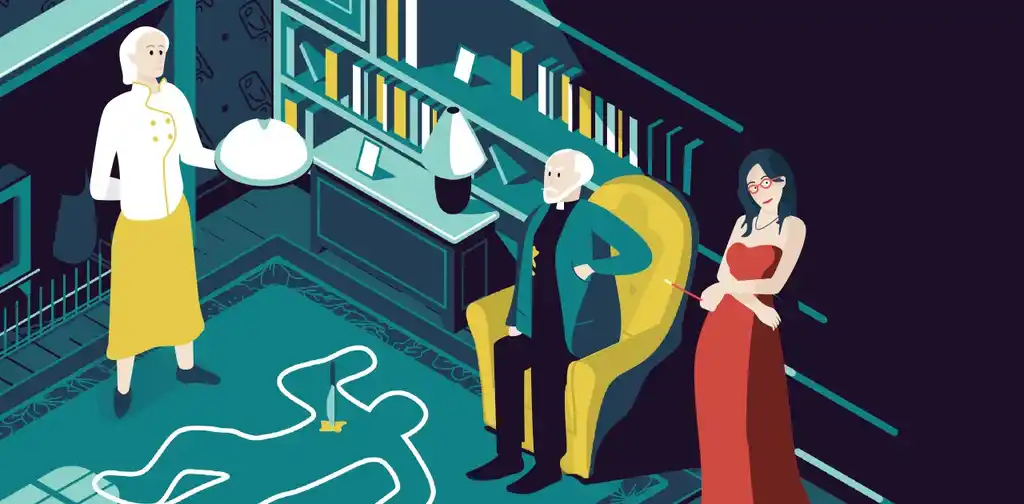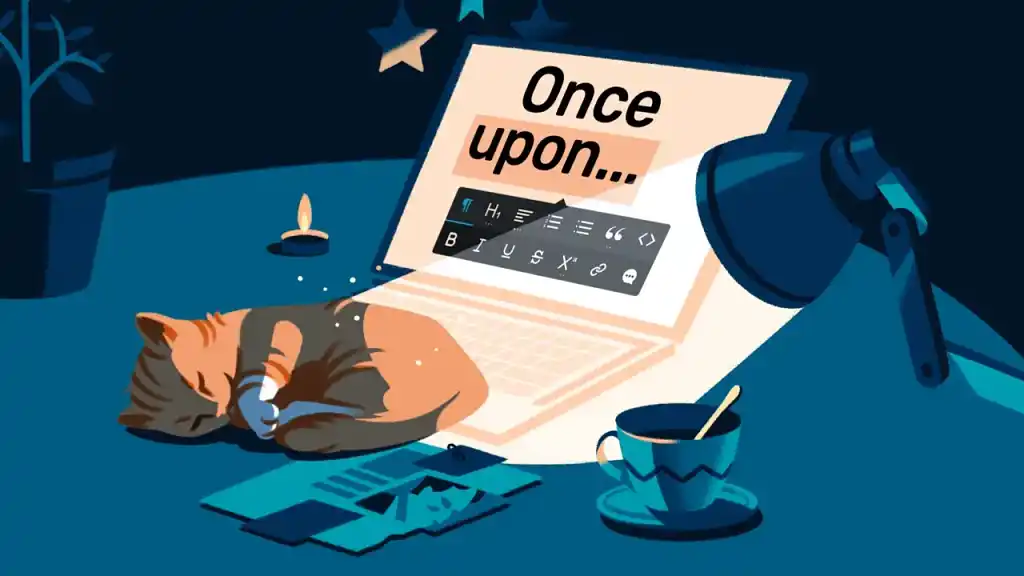Guides • Perfecting your Craft
Last updated on Oct 15, 2025
Second Person Point of View: Definition + Examples
Martin Cavannagh
Head of Content at Reedsy, Martin has spent over eight years helping writers turn their ambitions into reality. As a voice in the indie publishing space, he has written for a number of outlets and spoken at conferences, including the 2024 Writers Summit at the London Book Fair.
View profile →If ever there was a rule that most editors agree on, it’s this: don’t write a novel with a second person narrative.
In fact, that’s exactly the feedback Jay McInerney received when drafting Bright Lights, Big City. Written entirely in second person, this 1984 debut novel took the literary world by storm. But in the three decades since, its signature feat has rarely been replicated: indeed, it’s often cited as the exception that proves the rule — it’s been done already, so don’t bother, okay?
Well, not so fast. In this part of our series of guides on point of view, Reedsy's experienced editors will be looking at some good reasons to consider the second person point of view — as well as dissecting why it's usually best to avoid.
What is second person point of view?
In the second-person perspective, the narrator speaks to the reader through the pronouns "you" and "your". This establishes a feeling of immediacy and makes the reader to experience being a character within the story.
Here is an example:
You think you can see the bridge in the distance, but you can’t be sure your eyes aren’t playing tricks on you.
As Joel Bahr, a developmental editor at Amazon Publishing, says: “Even the minimal distance created between reader and character created by the phrase, “I thought" is refined further in second person. In this closer POV, there is no "I thought," but rather this is how you (we, really) think.”
Q: Should I follow current trends or write the story I’m most passionate about?
Suggested answer
If you write a book inspired by 2025 trends you might find that by the time it's ready for submission and even publication the trend has moved on to something new. It takes a long time to write a book: you have a better chance of sustaining momentum and enthusiasm if you stick to your passion project. I rather believe that readers pick up on that passion too.
Susanna is available to hire on Reedsy ⏺
The issue with following current trends is that the trend may be over before you get your book completed and out to the world. If you write what you are passionate about, the story will usually end up being stronger because you are writing a story that means a lot to you, as opposed to writing something just because you think it might sell.
However, you want to be sure the story you are passionate about still has a strong possibility of selling by avoiding cliches and plots that have been overworked and overdone.
Strong stories that readers can relate to will have a good chance of finding an audience no matter the genre.
Melody is available to hire on Reedsy ⏺
The case for second person POV
Despite the naysayers, several authors have dared to write a novel, chapter, or short story from the second person point of view. So what might they be trying to achieve? And why might you consider taking the risk yourself?
1. Second person point of view brings the reader closer to the story
When we talk about POVs, we often mention intimacy — in particular, how first person narratives tend to be more intimate than third person narratives.
Well, second person POV is most intimate of all. In the example of Bright Lights, Big City, a level of immediacy quickly emerges as the reader is thrust into the role of a serial cheater. According to Bahr: “First person is inviting the reader to believe what they're telling them. Second person takes the ‘ask’ off the table. There is no debate about what kind of person you are or if these actions happened. You are, and they did, and we know that because there is no functional difference between the reader and the character.”

As Bahr hints, the second person narrator can bypass the ‘unreliability’ of first person narrators. When characters tell their own tales, we often wonder how the truth of the story might be filtered — either by their selective reporting or lack of 20-20 introspection. With a second person narrator, readers are told what to feel, think, and see — and they usually have no reason to doubt it.
Greater intimacy, however, is not the only result of this viewpoint.
2. It distances the narrator from their own experience
We’ve looked at how second person narration can bring readers closer to the story. But sometimes, it’s used to create a greater sense of distance between the true narrator and the story they’re telling — as editor Matthew Sharpe suggests is the case with Bright Lights, Big City.
“It's almost as if the narrator's conscience is writing the novel, and there's a bit of self-accusation there, like, ‘You screwed this up, then you screwed up this other thing,’ and so on.“
Q: What is the single most important piece of advice for first-time novelists?
Suggested answer
Write the story you want to write, need to write--and want to read. Don't think about or worry about market trends, or how you will position your book on the market, or writing a book that will blow up on BookTok. A novel is a marathon, and in order to see it all the way through, you have to love your story (you can dislike some of your own characters of course, but you need to be deeply passionate about the overall story you are telling). In practical terms, by the time you write, revise, and publish your novel, it's likely that overall publishing trends will have shifted anyway. Write the book you want to write--things like what readers want, what publishers want, what agents want, can come later!
Kristen is available to hire on Reedsy ⏺
Read many books in your genre and look for why you like that particular book or don't like it. Get a feel for what works and what doesn't. Try to read books that sold well and were published in the last 5-10 years. Publishing norms change and styles change with time.
For instance, in the past, much time was spent setting up the story, and many opening paragraphs may have been spent describing the scenery and visual elements. While those elements are still important, modern books move at a much faster pace and spend less time on these elements by using sentences of description woven into the narrative rather than information dumps and blocks of long description that can slow the pace.
So, reading current books in your genre is the best way to learn writing methods yourself.
Melody is available to hire on Reedsy ⏺
3. It gives the narrator someone to address
Now we’re entering a gray area. Some novels directly address the reader as a character — but they are not strictly written in the second person. Books that fall into this category include those that take the form of letters written by one character to another. These include works like Bram Stoker’s Dracula, Alice Walker’s The Color Purple, and Jay Asher’s Thirteen Reasons Why.
The effect of reading epistolary narrative is often a sense of voyeurism — we feel as though we’re peering into the lives of others. The intention, in most cases, is to bring us closer to the characters, creating an almost conspiratorial relationship between narrator and reader.

4. Second person POV also reinforces the ideas that drive the story
Here’s a piece of advice from editor Kate Angelella: “If an author wanted to try writing in second person POV, I would encourage them to do so — so long as it's a purposeful choice. Is there a reason why this POV works best for your story, other than style and a desire to be literary with a capital L?”
So, there are a few of the major reasons you might want to consider writing in the second person. But now we’ve seen the effects of second person point of view, let's address the elephant in the room.
The case against second person POV
In the opinion of almost every editor we spoke with, writing a novel in the second person is a bad idea 99.9% of the time. Here are some of the reasons they give.
1. Second person POV can be a lot to ask of your reader
“In second person, I think it's crucial to consider what spaces you're asking the reader to occupy intimately, and how you're going to get them to suspend their disbelief. Sometimes, it's actually an increased distance between the character and the reader that can cultivate the empathy you need.”
— Ashley Strosnider
2. It may hurt your chances of finding representation
“It is becoming increasingly difficult to secure a literary agent and get a publishing deal if you are a new author. If that is your dream, don’t create any extra barriers for yourself that might put industry professionals off publishing your novel.”
— Amy Durant
3. It works better in short stories than in novels
“An entire novel told through second person can become wearying, especially when the protagonist of the story is unpleasant, as is the case in Bright Lights, Big City. For this reason, you may find that a second person narrative works better for short fiction.”
— Kristen Stieffel
At the end of the day, the choice is yours. And before you make a decision on which point of view you want to use, you might want to see a few examples…
Q: Why is head-hopping considered a problem in fiction?
Suggested answer
When there is head-hopping in a story, it detracts from the main character and makes the story too muddy. The reader won't know who the lead is in the story and who they should be rooting for. It also goes against traditional publishing norms of one point of view or multiple points of view with a different character viewpoint per chapter, with no more than 4 points of view in total for one book.
There are other ways for readers to know what a secondary character is thinking.
- That character can speak, so dialogue is used to convey their feelings.
- Physical expressions like clenched fists, smiles, etc., can communicate things to readers and other characters.
Melody is available to hire on Reedsy ⏺
Examples of second person POV in action
Examples of second person POV are much rarer, for the reasons we discussed above. But they’re not impossible to find.
Here, we’ve compiled a few of the most famous instances of second person point of view in literature.
1. The Fifth Season by N.K. Jemisin
You’re the mother of two children, but now one of them is dead and the other is missing. Maybe she’s dead, too. You discover all of this when you come home from work one day. House empty, too empty, tiny little boy all bloody and bruised on the den floor.
Set on a dying world, The Fifth Season is told from the viewpoints of three women, one of which is written from the second person point of view.
Reedsy editor Tricia Callahan worked on Jemisin’s book as a proofreader and sees it as a prime example of how this form can benefit a story.
“The second person POV brings the reader closer to the narrator, making the reading experience more intimate and less detached. When the narrator turns the reader into one of the characters, the story feels immediate and surrounding.”
2. Self-Help by Lorrie Moore
When you were six you thought mistress meant to put your shoes on the wrong feet. Now you are older and you know it can mean many things, but essentially it means to put your shoes on the wrong feet.
“How to Be an Other Woman,” tells the story of a woman who has started an affair with a married man.
The protagonist is not meant to be you, the reader, or Moore, the writer. Rather, it’s a woman named Charlene — who also happens to be the narrator. The second person point of view serves to distance Charlene from the story she’s telling: we know she’s actually referring to herself, so we understand that her use of the displaced second person, rather than direct first person, is symptomatic of how hard it is for her to talk about what she's done.
3. Complicity by Iain Banks
You hear the car after an hour and a half. During that time, you’ve been here in the darkness, sitting on the small telephone seat near the front door, waiting. You only moved once, after half an hour, when you went back through the kitchen to check on the maid.
Iain Banks’ Complicity contains two viewpoint characters: a journalist and a murderer, whose killings have been inspired by the journalist's writing. The chapters told from the murderer’s POV are in the second person.
Author and editor Tim Major points out that this choice of POV ties with the novel’s primary theme (which is spelled out in the title). “The second person perspective makes the reader complicit in the murders, experiencing them as if he or she is carrying them out, and therefore the reader is involved in a very unusual manner.”
Q: What should I do if someone has already written a book with my idea?
Suggested answer
Write it anyway!
The market for books is huge and each writer's voice is unique. You will have a different way of presenting the informaiton or telling the story, even if it's similar to someone else's.
Alice is available to hire on Reedsy ⏺
Write a better book. There are many books written about the same topic, same ideas, same plots. You can't protect an idea, only the written expression of that idea. Go write your own book that is thoughtful, well-written, and thorough. A good book will find an audience.
Maria is available to hire on Reedsy ⏺
This uncomfortable intimacy in the ‘killer’ chapters brings the reader into the headspace of the journalist — who himself is dealing with this acute sense of complicity.
4. The Reluctant Fundamentalist by Mohsin Hamid
Excuse me, sir, but may I be of assistance? Ah, I see I have alarmed you. Do not be brightened by my beard: I am a lover of America. I noticed that you were looking for something; more than looking, in fact you seemed to be on a mission, and since I am both a native of this city and speaker of your language, I thought I might offer you my services.
Mohsin Hamid’s The Reluctant Fundamentalist blurs the lines between first and second person: the protagonist, a Pakistani man on the streets of Lahore, speaks to an American stranger — you, the reader. As the book progresses, we are given clues as to who ‘we’ are in the book and what role we might play in the story. Cast in the story, we feel more involved in the discourse.
All that said, remember that this is your book. Maybe you intend to self-publish, or you don't mind limiting your potential audience, and are therefore less beholden to commercial expectations. Maybe your story just can't be told in any other way. If that describes your experience, then, by all means, ignore the naysayers. Take a deep breath, and dive into writing from the second person point of view.

FREE COURSE
Understanding Point of View
Learn to master different POVs and choose the best for your story.
And should you want to determine which POV is right for you and your specific story, we recommend taking this quick 1-minute quiz below.
🖊️
Which POV is right for your book?
Take our quiz to find out! Takes only 1 minute.
If, on the other hand, the potential rewards don’t outweigh the risks, head back to our post on first person POV, or go on to the next post to learn more about writing in third person.




3 responses
Wesley says:
06/07/2019 – 18:27
Really? The very fact that this article encourages writers NOT to use the second person viewpoint gives me even more reason to do it. The argument "it's already been done, so don't bother" is the most discouraging thing anyone could ever say to an artist. It's like saying there are plenty of books out there, so don't bother writing another one. Where would we be if every writer followed this dictum? The fact that second person is so rarely used is even more reason to explore it. Self-insert or second person POV stories have a dedicated following in some online communities, specifically fan fiction. What if writers were to expand upon what makes this such a popular choice in these circles and bring it to a broader literary community? I think there is so much potential for exploring second person POV, and feel a little bitter that this article leans so strongly towards discouraging this viewpoint. Please, don't give artists who already have a hard time creating and gaining recognition for their work yet another reason to doubt themselves!
Linda says:
13/08/2019 – 23:47
Second person has worked really well for me in flash fiction. Really, the whole article seems a bit discouraging.
Sasha Anderson says:
31/05/2020 – 11:28
Another example of second person viewpoint that I often see mentioned is in choose-your-own-adventure books - a different style of book, certainly, but still a work of fiction...